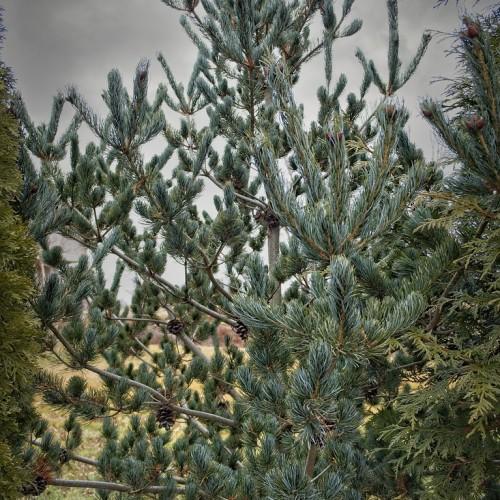
Japanese white pine
Pinus parviflora
Cycle:
Perennial
Watering:
Average
Hardiness Zone:
5 - 7
Flowers:
Flowers In Spring
Sun:
Full sun
Soil:
Well-drained
Cones:
Yes
Leaf:
Yes
Growth Rate:
High
Maintenance:
Moderate
Drought Tolerant:
Yes
Salt Tolerant:
Yes
Invasive:
Yes
watering
Water the Japanese white pine deeply and thoroughly every 2 weeks or so, allowing the soil to dry out between waterings. Give more water during periods of hot weather or prolonged dry conditions for best results. A general rule is to water the soil until it is completely saturated and then wait until the top inch of soil is dry before watering again. If the plants look wilted and dried out before it's time to water again, give them a light misting.
sunlight
Japanese white pine (Pinus parviflora) grows best when exposed to abundant, direct sunlight for at least 6 hours each day. It is tolerant to extended periods of shade, but for healthier growth, it is beneficial to place it in an area that receives a minimum of 6 hours of sunlight per day. For optimal growth, Japanese white pine should receive 8 to 10 hours of direct sunlight, preferably during the morning hours. Avoid positioning the tree in a spot where it is exposed to too much heat, as this can cause the needles to wilt and burn. Additionally, too much sunlight can prevent the tree from producing new shoots.
pruning
Japanese white pine (Pinus parviflora) should be pruned twice annually in the spring and summer. Pruning in the spring can be done when new growth begins to emerge, usually around late April to early May. During this time long shoots should be selected and pruned as they may affect the shape of the tree. In the summer, usually around mid-July to early August, dead branches should be taken out, and shoots should be cut back slightly so the tree can remain dense and compact. When pruning at this time, caution should be taken as some species of Japanese white pine can be sensitive to drastic pruning.
